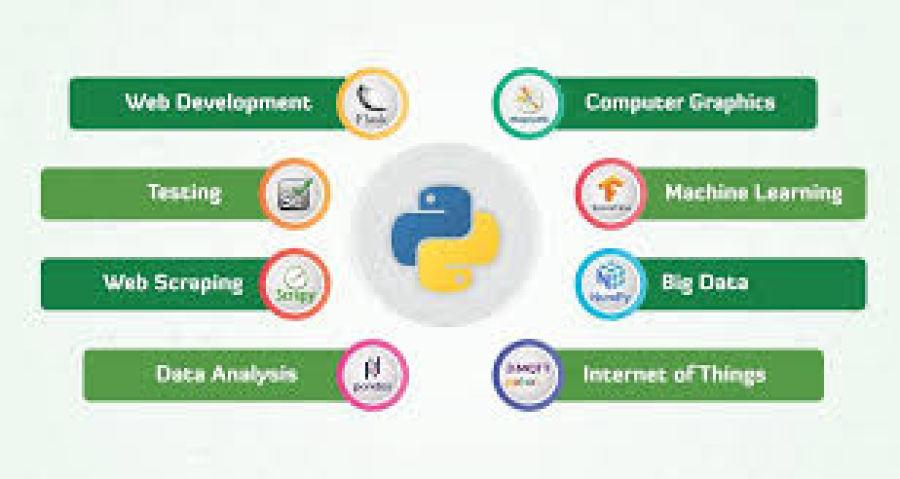The Difference Between Python and Java for Web Development
As a freelancer entering the web development world, choosing the right programming language can shape your career path and client base. Python and Java are two of the most popular and powerful programming languages used in web development, each with its own strengths, frameworks, and community support. Understanding the key differences between Python and Java helps freelancers make informed decisions when building their portfolio, selecting projects, or offering services to clients.
Long Description:
1. Overview of Python and Java in Web Development
Python is a dynamically typed, high-level programming language known for its readability and simplicity. It’s widely used in data science, machine learning, and increasingly in web development through frameworks like Django and Flask.
Java, on the other hand, is a statically typed, object-oriented language used across enterprise applications, mobile development (especially Android), and server-side web development via frameworks like Spring.
Freelancers must understand that both languages are relevant but serve slightly different use cases based on project type, performance requirements, and client expectations.
2. Ease of Learning and Use
Python is generally considered easier for beginners due to its straightforward syntax that resembles plain English. Freelancers new to web development often find Python’s learning curve more manageable, making it a great first language.
Java, while more verbose and complex, introduces strong object-oriented programming (OOP) concepts early on. For freelancers planning to work in corporate environments or long-term enterprise projects, Java provides a solid foundation in OOP.
3. Web Frameworks: Django vs. Spring
Python offers powerful web development frameworks like Django and Flask:
Django is a high-level framework that comes with many built-in features (authentication, database ORM, admin panel).
Flask is lightweight and gives more control to developers.
Java's top web framework is Spring, particularly Spring Boot for rapid application development. Spring is widely adopted by large companies and is robust for building enterprise-grade, scalable web applications.
Freelancers targeting startups or small to medium projects may benefit more from Python + Django due to its rapid development speed. Those aiming for corporate contracts or backend-heavy systems might prefer Java + Spring.
4. Performance and Scalability
Java typically outperforms Python in raw execution speed due to its compiled nature and strong multithreading support. It is often used in performance-critical applications like banking systems or real-time transaction platforms.
Python, being interpreted and single-threaded, may not match Java’s performance but compensates with faster development cycles. For freelancers, choosing Python or Java for a project should depend on:
Project performance requirements
Team and client familiarity
Time-to-market demands
5. Community Support and Libraries
Both languages have strong, active communities and a rich ecosystem of libraries.
Python has extensive support for machine learning, automation, and web scraping.
Java has mature libraries for security, API integration, and multithreading.
Freelancers can rely on community forums, GitHub repositories, and documentation to solve issues and speed up development.
6. Client and Market Demand
From a freelancing perspective, Python tends to dominate in:
Startups
AI/ML-driven products
Prototypes and MVPs
Web APIs
Java is heavily used in:
Enterprise systems
Government projects
Banking and insurance platforms
Android-based web integrations
Freelancers should align their skillset with the industries or clients they want to serve. If your target is corporate or institutional clients, Java could open more doors. If you prefer dynamic startups or tech innovation, Python is a better fit.
7. Job Opportunities and Freelance Projects
Freelance platforms like Upwork, Freelancer.com, and Toptal list thousands of projects related to both languages. However:
Python jobs often request experience in Django, Flask, REST APIs, or data pipelines.
Java freelance work typically revolves around backend development, web services, and mobile API connectivity.
Freelancers should scan job trends regularly and adjust their learning and portfolio accordingly.
8. Deployment and Hosting
Python-based web apps (Django/Flask) are easily deployed using services like Heroku, PythonAnywhere, and AWS Elastic Beanstalk.
Java-based apps often require more configuration but are highly stable and deployable via Tomcat servers, Google Cloud, or AWS EC2.
Freelancers working solo may find Python’s deployment process less complex, saving time and effort on DevOps tasks.
9. Security and Maintainability
Java’s static typing and strict syntax reduce runtime errors and make large-scale application maintenance easier.
Python, while flexible, requires discipline in code structuring and testing to maintain application quality in bigger projects.
For long-term freelance contracts, maintainability is a key factor. Java projects may involve more effort upfront but yield fewer bugs over time.
10. Which Should You Choose as a Freelancer?
It depends on your goals:
Want to build fast, scalable web apps for startups? Go with Python + Django.
Want to work with enterprise systems or large clients? Learn Java + Spring.
Looking to specialize in AI, data, or automation alongside web dev? Python wins.
Prefer strict, structured development with long-term maintenance projects? Java is ideal.
Many successful freelancers eventually learn both languages and apply them based on the project type and client requirements.
Conclusion
For freelancers, choosing between Python and Java for web development is not about which is better — it's about what fits your niche, target clients, and long-term goals. Each has its strengths in different segments of the freelance market. By understanding the core differences in syntax, frameworks, use cases, and performance, you can confidently build a career aligned with the right technologies.


 by Emily
by Emily




